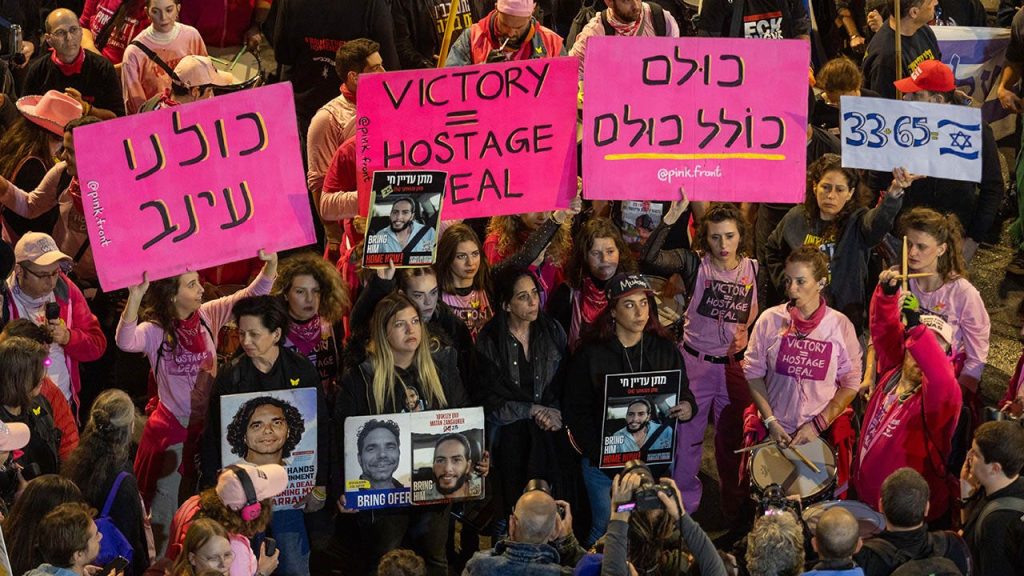Paragraph 1: A glimmer of hope emerged amidst the devastating conflict between Israel and Hamas as a cease-fire agreement, painstakingly negotiated and finally approved by the Israeli Cabinet, came into effect on Sunday, October 29, 2023, at 8:30 a.m. local time (1:30 a.m. ET). This marked a pivotal moment in the crisis, raising hopes for the return of Israeli hostages captured during Hamas’s brutal and unprovoked attack on October 7. The agreement outlines a phased approach to hostage release, prioritizing the most vulnerable captives – women, children, elderly individuals, and those requiring medical attention. This initial stage, known as Phase One, set in motion a carefully orchestrated process for the liberation of a total of 33 hostages over a 42-day period.
Paragraph 2: The first tangible sign of the agreement’s implementation was the anticipated release of three female hostages immediately following the cease-fire’s commencement. While the identities of these initial returnees remained undisclosed until shortly before their release, the anticipation was palpable on both sides of the conflict. Underscoring their commitment to the hostages’ well-being, the Israel Defense Forces (IDF) meticulously prepared for their arrival, equipping camper trailers with necessary supplies and comfort items to ensure a supportive and humane transition back to Israeli soil. This demonstrated a profound understanding of the trauma endured by the hostages and a commitment to their physical and emotional recovery.
Paragraph 3: The cease-fire agreement established a structured timeline for the subsequent release of hostages. Four more individuals were scheduled for release on day seven, followed by another three on day 14. This incremental approach, with a consistent prioritization of women, underscored a strategic focus on securing the freedom of the most vulnerable captives first. The release schedule continued with three more hostages on days 28 and 35, respectively. Critically, the agreement also addressed the cases of Avera Mengistu and Hisham al-Sayed, two individuals held captive in Gaza since 2014 and 2015. Their release was slated to occur between days 35 and 42 of Phase One, symbolizing a significant step towards resolving long-standing humanitarian concerns.
Paragraph 4: The final week of Phase One was designated for the release of the remaining 12 hostages included in this initial stage. Concurrent with the hostage releases, the agreement stipulated the return of over 1,000 Palestinian prisoners to Gaza. This reciprocal exchange formed a crucial element of the deal, reflecting the complex political and humanitarian dimensions of the conflict. While the majority of Israeli hostages were believed to be alive, the sensitive nature of the situation demanded a careful approach to information disclosure, ensuring the safety and well-being of all involved. The identities of the hostages were thus kept confidential until closer to their respective release dates.
Paragraph 5: Crucially, the cease-fire agreement established the framework for Phase Two, envisioned to commence on day 43 of the agreement, following the completion of Phase One. Negotiations for this second phase were scheduled to begin on day 16 of Phase One, setting the stage for the potentially challenging discussions surrounding the release of all remaining Israeli hostages. This included young men, soldiers, and fallen soldiers, whose return represented a critical objective for the Israeli government and a source of profound hope for their families and the nation. Phase Two was also allocated a 42-day timeframe, mirroring the duration of Phase One.
Paragraph 6: Underlining its commitment to the safe return of every hostage, the Israeli government made a significant strategic decision: the IDF would maintain a presence in Gaza until the last hostage was freed. However, this presence would adopt a revised approach, focusing on establishing a secure zone along the Gaza border. This strategic shift signaled a commitment to providing enhanced security for residents in the area while simultaneously maintaining pressure for the full implementation of the hostage release agreement. The details of this new defense strategy were still being finalized under the meticulous oversight of the IDF’s Southern Command. The cease-fire agreement, while fragile, represented a significant step towards de-escalation and a beacon of hope for the families of the hostages and the prospect of a more peaceful future.

